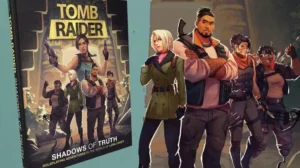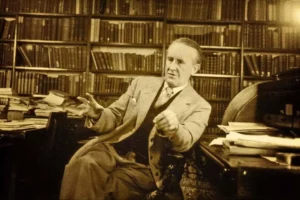
The Art of Worldbuilding the Tolkien Way
JRR Tolkien not only created characters and plots, but also entire civilizations, languages, and mythologies.
Similarly, when creating a D&D world, you need to think beyond the obvious. First, define the geography.
Next, and equally important, is delving into the cultures, languages, and conflicts that shape this world.
For example, relationships between different races, such as elves and dwarves, can be inspired by the complexity of Middle-earth.
The Art of World Creation
The creation of worlds, known as Worldbuildingis the masterful technique of shaping and detailing fictional universes, whether for tabletop games or other fictional narratives.
While many contexts are limited to one planet, creation encompasses vast settings that span galaxies or tiny worlds as a single community.
Building Your Universe

First, you begin by establishing the fundamental concept of your universe. Thus, each element contributes to the overall tapestry.
1. Cosmology
Identifying your world’s space in the cosmos is vital. This positioning can encompass both the starry skies and alternative dimensions present in games like D&D.
Therefore, if these dimensions are introduced, it is crucial to understand their functionality, impact on the master plan, and accessibility.
2. Stars and Constellations
Celestial bodies have profound implications for the culture and environment of your world.
The dance of the stars, planets and other celestial bodies shapes both festivals and rituals.
3. Geography
The physical structure of your world is the foundation of everything. Geographic contour impacts political borders, population distribution and climates.
Furthermore, for genuine immersion, the climatology needs to be believable and logical.
4. Anthropology and Species
Each world requires different inhabitants.
Thus, define races or species, ensuring that each one has unique characteristics and cultures.
5. Society and Culture
Culture shapes a world as much as its mountains and valleys.
It gives life and depth, offering nuances to the narrative.
6. History
Your world was not born yesterday.
It has a past, full of prehistoric events, ancient myths and historical records. All these elements shape the present and signal the future.
Finally, with your world sculpted and ready, the real adventure begins: playing and exploring the infinite possibilities that your creation offers.
Create Special Environments
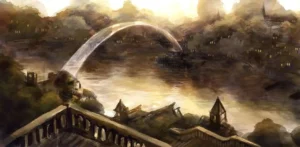
Campaigns, unlike one-shots, offer the freedom to travel through countless environments.
Regardless of whether they are in a fantasy world or not, make sure these locations are special.
Don’t just view them; describe sounds and smells, give personality to environments.
Whenever possible, think about unique geographies or architecture that will make players remember and even want to return there one day.
If you find references on the internet, use them as tools to make the group easier to see.
However, don’t forget that a good narrative will still be essential.
A Living World
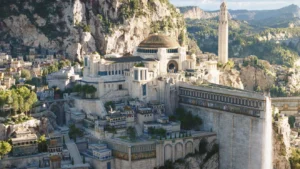
Don’t neglect the world to the detriment of the players.
The campaign gives freedom to change course, but what has already been presented will continue to happen in one way or another.
Keep a history of events in the world and have them refer back to it in some way in the future, or let them know the long-term results of their actions.
Has the party decided to ignore the group of wizards seeking to summon an ancient god? Perhaps, after a few adventures, they will discover that they have succeeded.
The deposed king of the kingdom that gave way to the refugee prince the group saved may emerge with an army to support them at the worst time.
The possibilities are endless if you keep the world alive around your characters.
Technical Details: Integrated Mechanics

Playing D&D goes beyond simple narratives. The rules system, which may seem complicated at first glance, has a purpose.
Introducing custom mechanics can add a new dimension to your campaign, but it’s essential that they integrate with the narrative and world.
Let’s explore some techniques and examples:
Custom Magic System: Suppose you want to introduce a new type of magic that derives from the energy of stars.
How is it perceived in the world? Is it a forgotten ancient art or a new discovery? What are your limits and risks? Perhaps it is more powerful at night or in specific locations.
Magic Items Unique: Instead of just using items from the core book, create artifacts with stories.
For example, a sword that once belonged to a legendary hero that now resonates with his soul, giving the wielder visions of the past.
Evolved Combat Systems: Think about mechanics that reflect the culture and environment. In a city built on water, naval combat and swimming skills may be more prevalent.
Including rules for approaches, currents and even underwater fights can enrich the experience.
Professions and Specific Skills: In a mountainous region, climbing can be an essential skill.
Introduce specific professions, such as “Guardian of the Mountains”, which specialize in protecting passes and guiding caravans through dangerous routes.
When adapting or introducing new mechanics, it is vital that they not only serve to add complexity, but also enrich the narrative and immersion in the world.
Each new rule must have a reason for being, rooted in the culture, history or environment of its setting.
How to create your campaign: Create Arcs
Campaigns generally have grandiose and time-consuming goals.
However, these big events can be broken down into smaller but equally captivating arcs.
Consider each moment of your game as a complete arc, similar to a TV series.
Thus, even the initial moments can have twists, drama and connections to something bigger.
This way, the group’s spirit will remain constantly lit.
Finally, when concluding an arc, it is essential to bring character evolution and a sense of accomplishment.
However, a hook must also be introduced to advance the main plot.
This demonstrates that not only have the characters evolved, but the challenges they will face will also intensify.
Advanced Tools for Worldbuilding in D&D
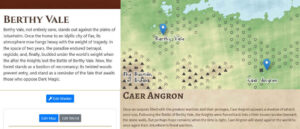
Build worlds in Dungeons & Dragons it is an intricate art.
So, to bring your realms and adventures to life, explore the tools and techniques in Chapter 5, incorporating elements specific to D&D 5e.
1. World Mapping
Cartography is fundamental. For example, when mapping a mountainous region, consider housing Goblins in the hills (based on typical D&D ecology).
Such a location may be close to a human village, leading to potential conflicts or missions to deal with goblinoid threats.
2. Establishment of Populations
Populating your world is vital. Suppose you create a port city. Using D&D 5e, this city could be a trading point for Tritons, increasing cultural diversity.
This can introduce unique elements such as underwater markets or temples dedicated to sea gods.
3. Structuring Kingdoms
Defining the policy is crucial. Inspired by D&D 5e, a kingdom can be governed by a council of arcane wizards.
Such a choice influences the perception of magic in that region – perhaps magic is highly regulated, or perhaps wizards have special privileges.
4. Currencies and Economy
Within D&D, we have the standard coins of copper, silver, electrum, gold and platinum.
Imagine a city where magic is the dominant force, and they have an enchanted coin that serves as a bargaining chip for spells or magical components.
This currency, perhaps called the “Arcane Tear,” could be used exclusively for magical transactions.
In conclusion, combining worldbuilding techniques with D&D 5e-specific mechanics provides additional richness to your campaign.
So, take inspiration from the game’s rules and lore to create vibrant, immersive worlds for your players.
Enriching the Forgotten Realms with Advanced Techniques
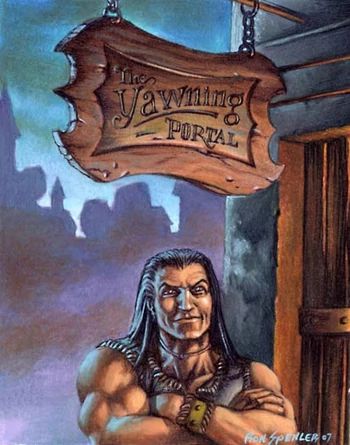
The setting of Forgotten Realms is, in itself, incredibly detailed.
However, when adding your own plots and elements, you need to make sure they fit together organically.
If you are introducing a new thieves guild, where does it fall in the cities’ power hierarchy?
Additionally, when adapting or introducing new mechanics, such as combat systems or magic rules, make sure they are aligned with the setting’s lore.
Examples:
Historical Integration: Dive deep into the lore of the Forgotten Realms. Align your narrative with past events, incorporating them in ways that players can relive or discover more about those moments.
For example, a quest might involve a lost artifact from the Age of Dragons.
Politics and Intrigue: The Forgotten Realms setting is full of city-states, kingdoms, and factions.
Develop complex plots of political intrigue between these entities. Who really holds the power in Waterdeep? Is there a guild of thieves plotting in the shadows?
Environmental Challenges: From the icy peaks of Icewind Dale to the deserts of Anauroch, use the environment to create challenges.
It could be a test of survival or the search for a lost oasis that only appears under certain magical conditions.
Underrated Cultures: While elves, humans, and dwarves are central to many campaigns, the Forgotten Realms is also home to gnomes, orcs, yuan-ti, and many others.
Build stories that bring these cultures into the spotlight, showing their own conflicts
How to create your D&D campaign!
In conclusion, creating an engaging D&D campaign is a task that requires attention to detail, from worldbuilding to rules integration.
Furthermore, taking inspiration from masters like Tolkien can take your storytelling to new heights.
In the end, the goal is to provide an unforgettable experience for your players, and with dedication and technique, you will certainly achieve this goal.
Source: https://www.caixinhaquantica.com.br/como-criar-sua-campanha-dnd/


